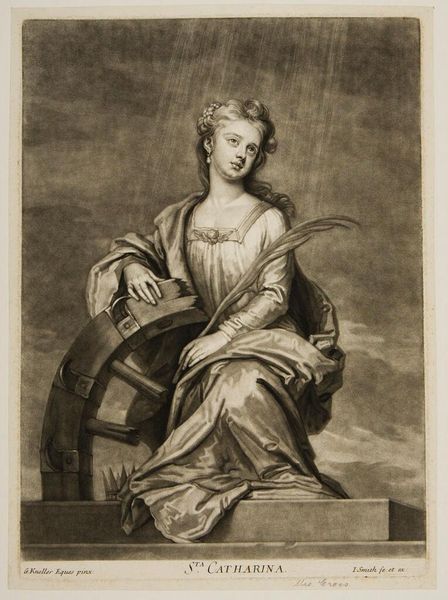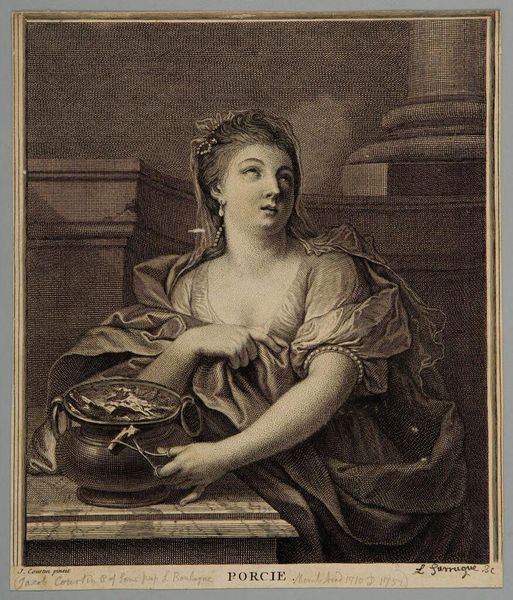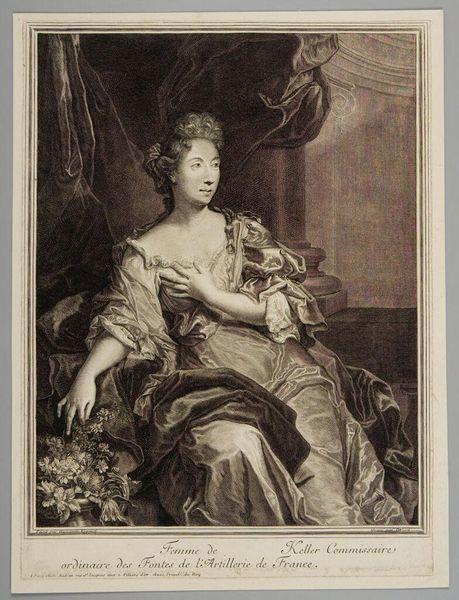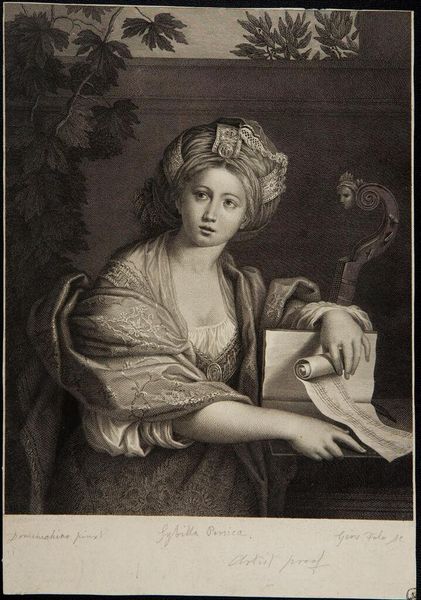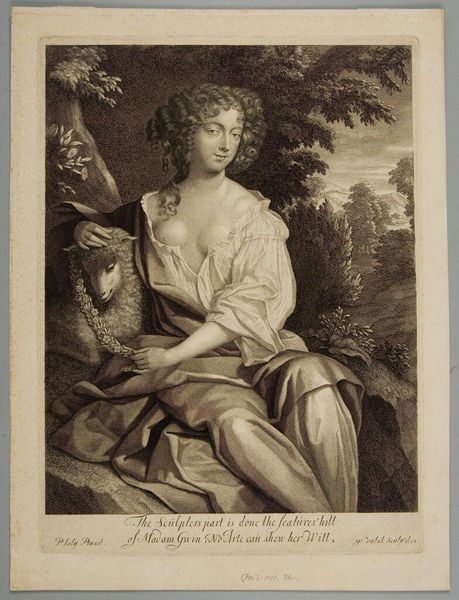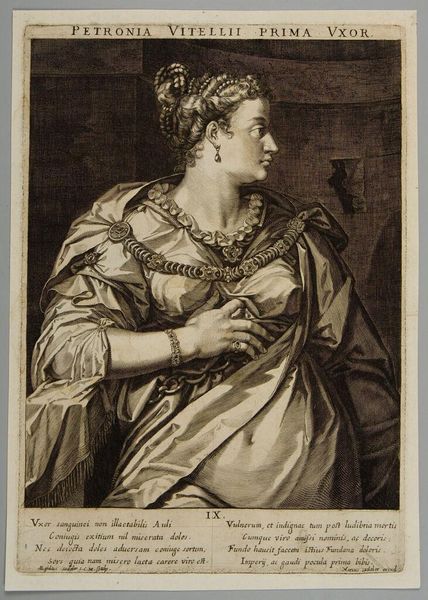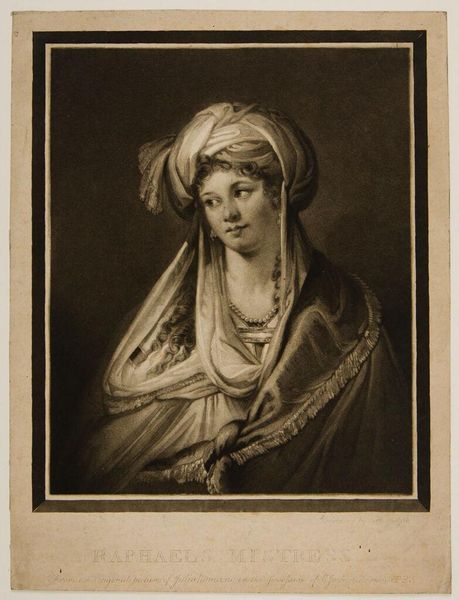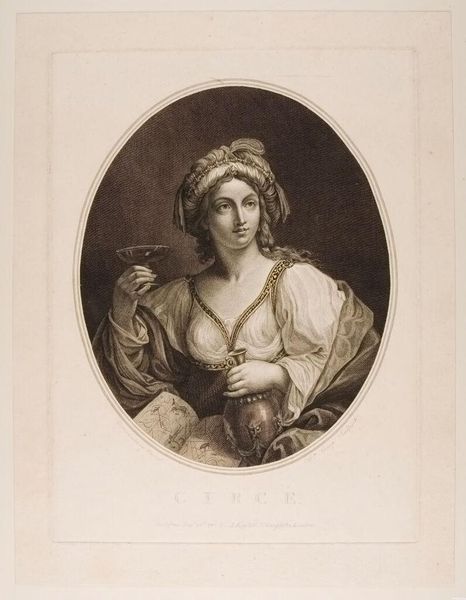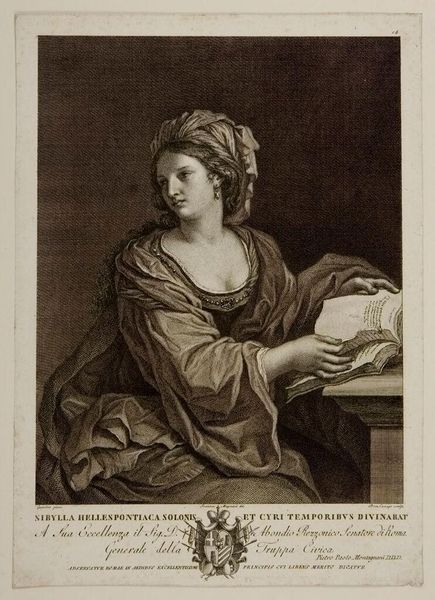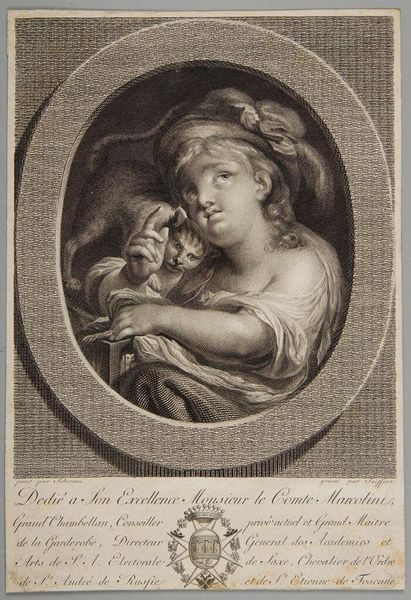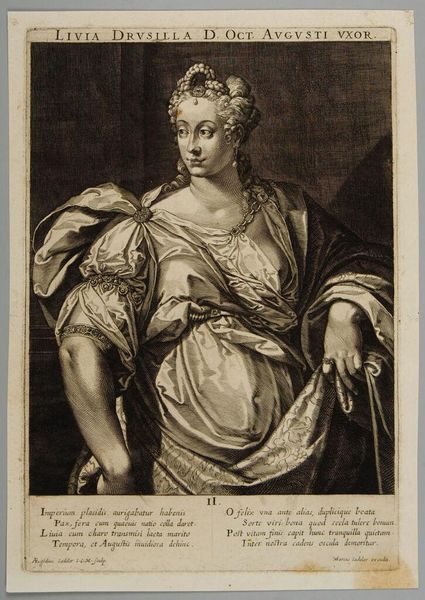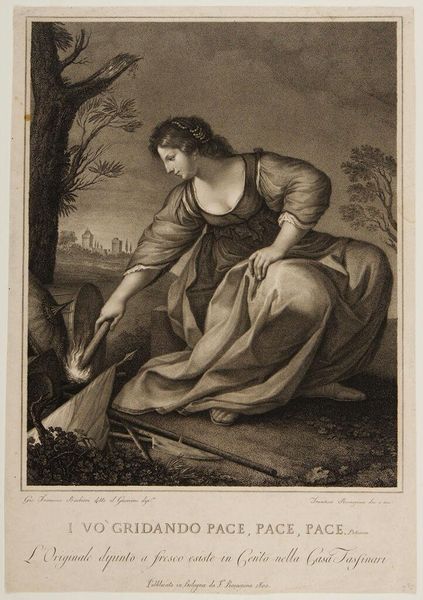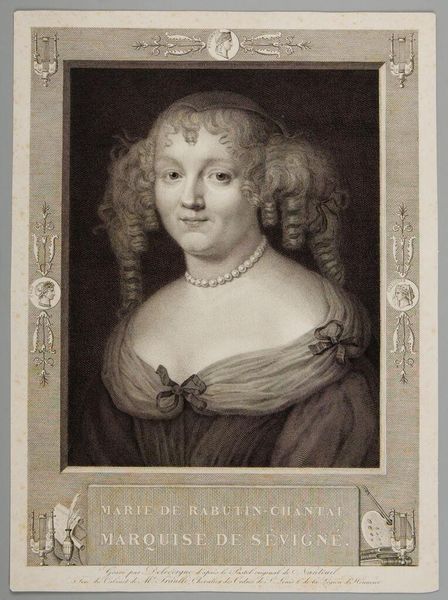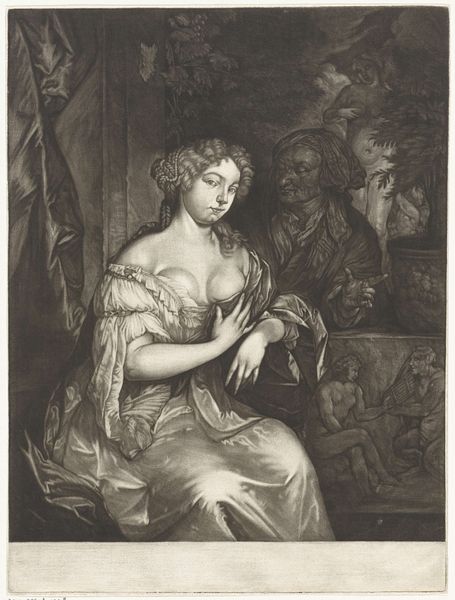
Copyright: CC0 1.0
Curator: James Stow, active in the late 18th and early 19th century, created this print of Marie de Rohan. She has such an alluring presence, doesn't she? Editor: Absolutely, there's a directness in her gaze and relaxed posture, though it feels somewhat performative. It is as if she is inviting us to admire her beauty and style. Curator: The turban and the nonchalant way she touches her hair seem to signal a certain freedom from societal constraint, or perhaps a studied exoticism meant to emphasize her desirability. Editor: Turbans in portraits often symbolized power and status. Marie de Rohan was known for her influence in the French court, so perhaps Stow is alluding to her political role as well. It's an assertion of her identity, defying the limitations placed on women of her time. Curator: The pearls could indicate wealth and status, but could also be interpreted as symbols of purity or even tears, depending on the context. Editor: Given Rohan's reputation, I lean towards the former. Ultimately, Stow’s portrait presents a complex interplay of fashion, power, and identity within a specific historical moment. Curator: Precisely. The image serves as an artifact, preserving not just a likeness but a web of social meanings.
Comments
No comments
Be the first to comment and join the conversation on the ultimate creative platform.
